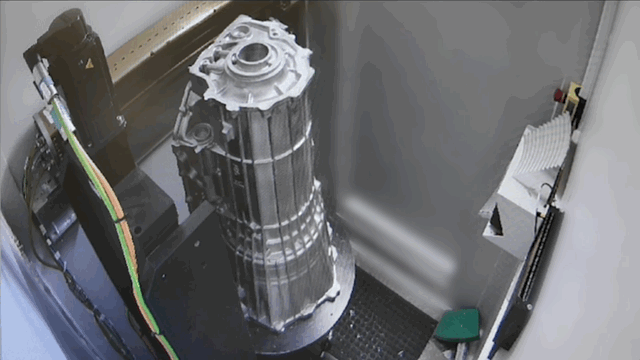
"What we're trying to do is use this tool to look at where the defects are, to change our processes so that when we build it, we don't have to deal with the defects and then the ramp plan that comes with it," Duby said.
Destructive testing used to be the name of the gameslicing a casting into bits to see if there were any problems in it.But that was a laborious and time-consuming process.
Using CT scanners to 3D image parts during development has improved first-time quality by 90 percent, Duby told me, and has cut development time by a third.
A casting for GM's 10-speed transmission, rotating in the CT scanner.
Credit: General Motors The datasets have value beyond quality control checks.
"The less we have to do physically, the more that we can do with math modeling, the more that we can do with simulation, the more data that you collect," said Mike Trevorrow, senior vice president of global manufacturing at GM.
"We're a company who's been doing this for 100 years.
We wish we would have collected all the data of all the things we've tried, which would then enable newer technologies like AI and other things to give us even better predictive capabilities."

 9
9







